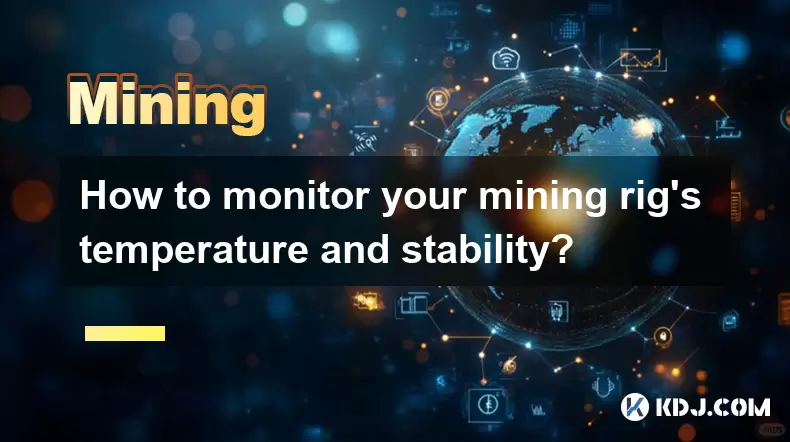-
 Bitcoin
Bitcoin $116400
-0.36% -
 Ethereum
Ethereum $4033
3.40% -
 XRP
XRP $3.302
-1.26% -
 Tether USDt
Tether USDt $1.000
-0.02% -
 BNB
BNB $796.1
1.67% -
 Solana
Solana $177.8
1.89% -
 USDC
USDC $0.9999
0.00% -
 Dogecoin
Dogecoin $0.2314
4.09% -
 TRON
TRON $0.3381
0.14% -
 Cardano
Cardano $0.7989
1.22% -
 Stellar
Stellar $0.4496
-1.84% -
 Chainlink
Chainlink $20.42
9.42% -
 Hyperliquid
Hyperliquid $41.17
0.88% -
 Sui
Sui $3.914
3.77% -
 Bitcoin Cash
Bitcoin Cash $584.7
1.52% -
 Hedera
Hedera $0.2632
-0.54% -
 Avalanche
Avalanche $24.09
3.40% -
 Ethena USDe
Ethena USDe $1.001
-0.02% -
 Litecoin
Litecoin $123.2
1.33% -
 Toncoin
Toncoin $3.318
-0.04% -
 UNUS SED LEO
UNUS SED LEO $8.984
-0.05% -
 Shiba Inu
Shiba Inu $0.00001323
2.85% -
 Uniswap
Uniswap $10.90
4.41% -
 Polkadot
Polkadot $3.999
3.34% -
 Dai
Dai $1.000
0.01% -
 Cronos
Cronos $0.1630
9.64% -
 Bitget Token
Bitget Token $4.484
0.82% -
 Monero
Monero $272.4
2.44% -
 Pepe
Pepe $0.00001173
6.03% -
 Aave
Aave $290.8
2.88%
How to become a verifier of Ethereum?
As an Ethereum verifier, you're responsible for validating new blocks of transactions and safeguarding the network's integrity while earning rewards proportionate to your staked ETH.
Feb 26, 2025 at 02:06 am

Key Points:
- Understand the role and responsibilities of an Ethereum verifier
- Meet the hardware and software requirements for Ethereum verification
- Become familiar with the technical process of Ethereum verification
- Set up your verifier infrastructure
- Join the Ethereum validator community
How to Become a Verifier of Ethereum
1. Understand the Role and Responsibilities of an Ethereum Verifier
Verifiers in the Ethereum network are responsible for validating new blocks of transactions. They ensure the integrity and consensus of the network by collectively approving or rejecting new blocks based on predetermined rules. Verifiers are also responsible for safeguarding the network against malicious actors and ensuring its smooth operation.
2. Meet the Hardware and Software Requirements for Ethereum Verification
Ethereum verification requires specialized hardware and software. The minimum requirements include:
- A computer with at least 8GB of RAM and a multi-core CPU
- A solid-state drive (SSD) with at least 512GB of storage
- A stable internet connection
- Ethereum software, such as Geth or Erigon
3. Become Familiar with the Technical Process of Ethereum Verification
The process of Ethereum verification involves several technical steps:
- Client synchronization: Verifiers must download and verify the entire Ethereum blockchain, which can take several days.
- Block validation: Verifiers receive new blocks of transactions and verify their validity by checking the signatures, timestamps, and transaction history.
- Attestation: Verifiers bundle valid blocks into attestations and broadcast them to the network.
- Committee selection: Verifiers are randomly selected to participate in consensus committees, where they propose new blocks or vote on proposed blocks.
4. Set Up Your Verifier Infrastructure
To set up your verifier infrastructure, you will need:
- A secure server or virtual machine
- A unique ETH address
- 32 ETH tokens staked as collateral
- A client software
- A node discovery service
5. Join the Ethereum Validator Community
Joining the Ethereum validator community allows you to connect with other validators, exchange information, and participate in network governance. You can join community forums, follow Ethereum developers on social media, and attend Ethereum events.
FAQs
What is the reward for becoming a verifier?
Verifiers earn ETH tokens as rewards for participating in the network consensus. The rewards are proportional to the amount of ETH staked and the duration of your participation.
Are there any risks involved in becoming a verifier?
Yes, there are some risks involved, including:
- Slashing: If a verifier misbehaves or fails to validate blocks correctly, their staked ETH may be slashed.
- Loss of funds: Verifiers are responsible for the security of their own ETH addresses. If their address is compromised, their funds may be lost.
- Network congestion: During periods of high network congestion, verifiers may experience delays or errors in processing transactions.
What are the different client software options for Ethereum verification?
There are several client software options available, including:
- Geth: The official Ethereum client developed by the Ethereum Foundation.
- Erigon: A high-performance Ethereum client that is lightweight and resource-efficient.
- Prysm: A client written in Go that is known for its simplicity and reliability.
- Nimbus: A client developed by the Status team that emphasizes privacy and ease of use.
Disclaimer:info@kdj.com
The information provided is not trading advice. kdj.com does not assume any responsibility for any investments made based on the information provided in this article. Cryptocurrencies are highly volatile and it is highly recommended that you invest with caution after thorough research!
If you believe that the content used on this website infringes your copyright, please contact us immediately (info@kdj.com) and we will delete it promptly.
- HAT Token Mania: Price Surges, Crypto Auctions, and Meme Coin Mayhem
- 2025-08-09 11:10:11
- Undervalued Cryptos Primed for a 2025 Takeoff: MAGACOIN, TRX, and SUI Lead the Pack
- 2025-08-09 11:10:11
- Bitcoin Goes to Harvard: Ivy League Embraces Digital Assets
- 2025-08-09 10:50:12
- Bitcoin, BlockDAG, and Toncoin: Decoding the Crypto Buzz in NYC
- 2025-08-09 11:30:11
- XRP, Pi Network, and Binance Listing Buzz: What's the Hype?
- 2025-08-09 11:30:11
- Arctic Pablo Coin: The Meme Coin Presale Promising High ROI in Q3 2025
- 2025-08-09 10:50:12
Related knowledge

What is "proof-of-work" and how does it relate to mining?
Aug 07,2025 at 02:03pm
Understanding the Concept of Proof-of-WorkProof-of-work (PoW) is a consensus mechanism used in blockchain networks to validate transactions and secure...

What are the differences between mining on Windows vs. Linux?
Aug 06,2025 at 11:29pm
Overview of Cryptocurrency Mining PlatformsCryptocurrency mining involves using computational power to solve complex cryptographic puzzles and validat...

How to use an old computer for cryptocurrency mining?
Aug 07,2025 at 12:42pm
Understanding the Feasibility of Using an Old Computer for MiningUsing an old computer for cryptocurrency mining may seem outdated, but it is still te...

Can you mine cryptocurrency using solar power?
Aug 07,2025 at 12:00am
Understanding the Basics of Cryptocurrency MiningCryptocurrency mining involves validating transactions on a blockchain network by solving complex cry...

How to monitor your mining rig's temperature and stability?
Aug 09,2025 at 09:43am
Understanding the Importance of Temperature Monitoring in Mining RigsMaintaining optimal temperature levels in a mining rig is essential for long-term...

How to build a mining rig inside a PC case?
Aug 06,2025 at 11:01pm
Understanding the Basics of a Mining Rig in a PC CaseBuilding a mining rig inside a PC case involves transforming a standard computer chassis into a d...

What is "proof-of-work" and how does it relate to mining?
Aug 07,2025 at 02:03pm
Understanding the Concept of Proof-of-WorkProof-of-work (PoW) is a consensus mechanism used in blockchain networks to validate transactions and secure...

What are the differences between mining on Windows vs. Linux?
Aug 06,2025 at 11:29pm
Overview of Cryptocurrency Mining PlatformsCryptocurrency mining involves using computational power to solve complex cryptographic puzzles and validat...

How to use an old computer for cryptocurrency mining?
Aug 07,2025 at 12:42pm
Understanding the Feasibility of Using an Old Computer for MiningUsing an old computer for cryptocurrency mining may seem outdated, but it is still te...

Can you mine cryptocurrency using solar power?
Aug 07,2025 at 12:00am
Understanding the Basics of Cryptocurrency MiningCryptocurrency mining involves validating transactions on a blockchain network by solving complex cry...

How to monitor your mining rig's temperature and stability?
Aug 09,2025 at 09:43am
Understanding the Importance of Temperature Monitoring in Mining RigsMaintaining optimal temperature levels in a mining rig is essential for long-term...

How to build a mining rig inside a PC case?
Aug 06,2025 at 11:01pm
Understanding the Basics of a Mining Rig in a PC CaseBuilding a mining rig inside a PC case involves transforming a standard computer chassis into a d...
See all articles

























































































